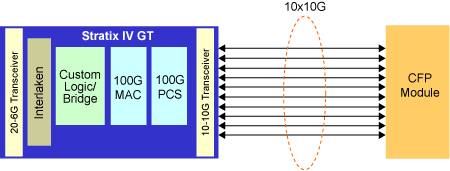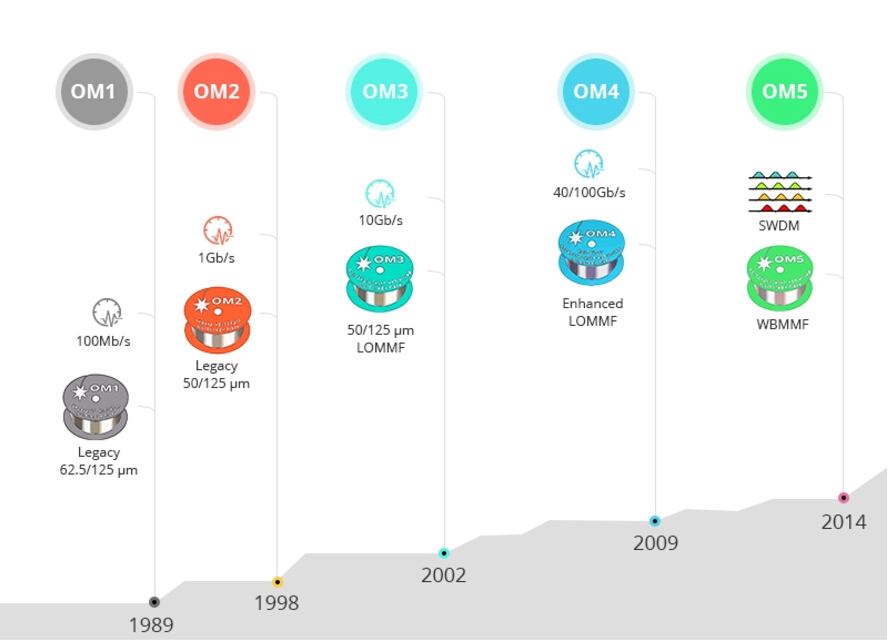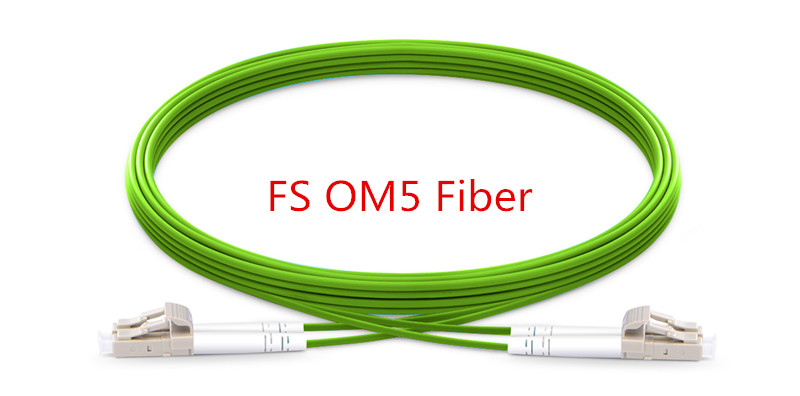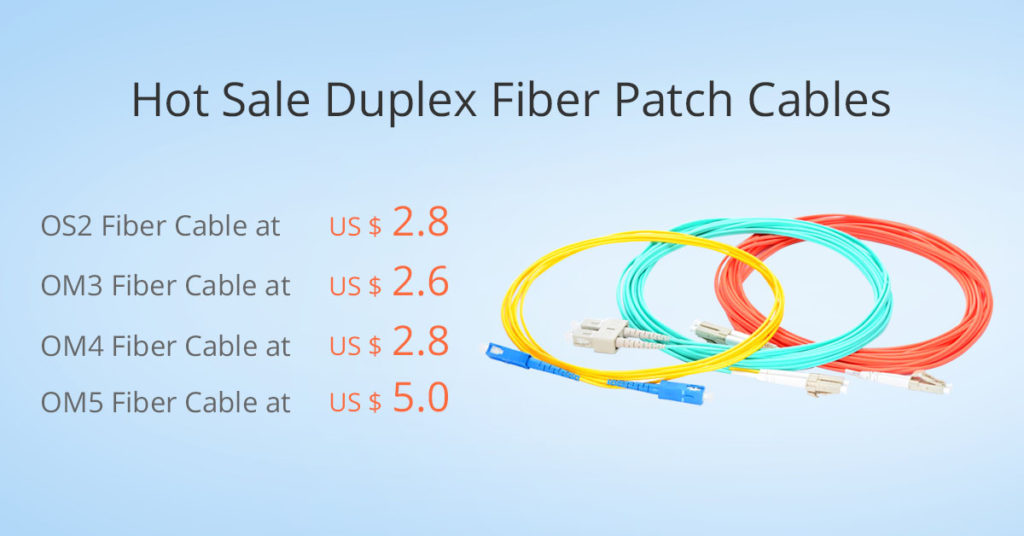With the price of 100G QSFP28 optics and CFP form factors (CFP module/CFP2/CFP4) dropping down in 2017, 100G technology is becoming more and more popular among data center managers and IT pros in order to cope with the ever-lasting bandwidth needs. However, 100G is not the finish line. CFP multimode source agreement (MSA) demonstrated CFP8 (16X 25 Gb/s) form factor for 400 Gigabit Ethernet at OFC 2017. Although CFP8 module is still in development, it is assured to be popular in the near future. Therefore, this article will have a clearer introduction to 400G CFP8 PAM4 and NRZ modules, and compare with the former CFP modules and 400G CDFP.
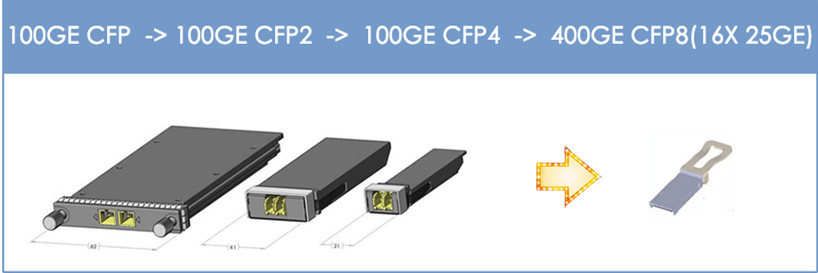
Introduction to 400GbE CFP8 Modules
CFP8 module is the latest developing CFP from factor version, which supports eight times and four times the bandwidth density of CFP and CFP2 form factors, respectively. The CFP8 interface supports up to 16 different lanes in each direction with nominal signaling rates of 25Gb/s or 26Gb/s per lane, and either NRZ or PAM4 signaling. As the above image shows, CFP8 is approximately the size of a CFP2 optics. This interface has been generally specified to allow for 16 x 25 Gb/s and 8 x 50 Gb/s mode.
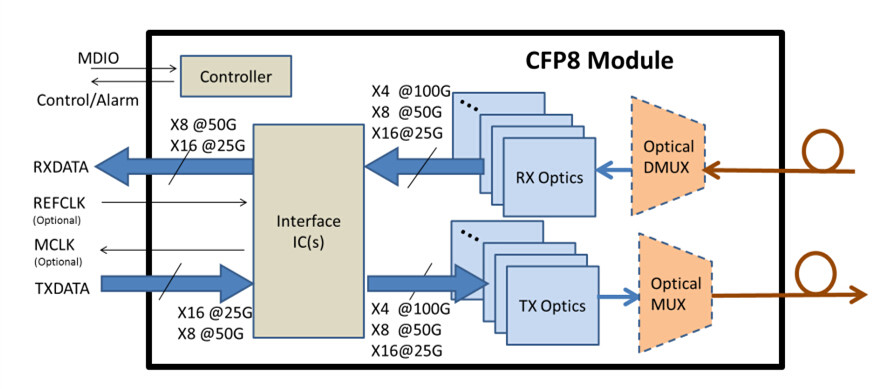
Example IEEE specifications supported by CFP8:
- 400GBASE-SR16 parallel MMF (16x25G NRZ)
- 400GBASE-FR8/LR8 duplex SMF (8x50G PAM4 WDM)
- 400GBASE-DR4 parallel SMF (4x100G PAM4)
- CDAUI-16, CDAUI-8
400G CFP8 FR8 and LR8 Transceivers with PAM4 Technology
CFP8 PAM4 optics, compliant with IEEE 802.3bs 400GBASE-FR8 & LR8 electrical interface specifications, offers higher receiver bandwidth capacity for reach up to 2km and 10km. The 400GBASE-FR8 & LR8 consumes less than half the power per GB compared to a 100G CFP4 msa solution. CFP8 optics uses LC duplex fiber cables.
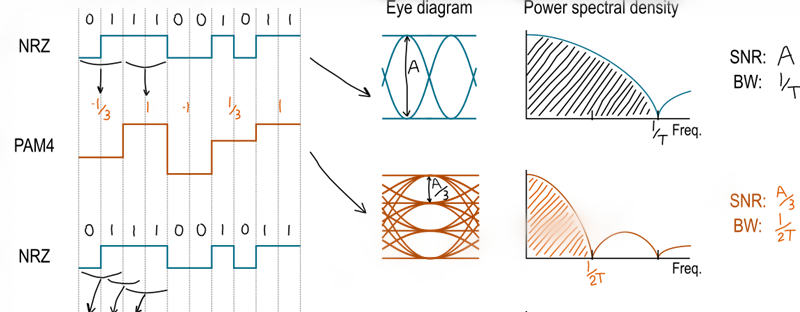
The PAM4 stands for pulse amplitude modulation with four levels. Instead of driving the laser to generate one of the two output amplitudes, like NRZ, PAM4 technology generates four different amplitude levels, meaning a network based on PAM-4 can send twice as much data as an NRZ version.
CFP8 400GBASE-SR16 with NRZ Technology
CFP8 400GBASE-SR16 modules focus on non-return to zero (NRZ) signal modulation Scheme. To use an analogy, it means you’re sending signals in the most simple format: “light on” and “light off.” A ‘1” is transmitted as pulse of light whereas ‘0” is no light output. Based on the currently available fast VCSEL light sources only achieving data rates of 25G, sixteen channels must transmit in parallel to create a 400G data stream.
Due to the design simplicity NRZ, the modulation format of choice for all data rates up to 25Gb/s. 400GBASE-SR16 CFP8 transceivers requires 16 fiber pairs to support a total of 400Gb/s with MPO multimode cables.
What’s New With CFP8 Module?
A CFP8 module is a hot pluggable module. Compared with the former modules, the control and status reporting functions between a host and a CFP8 module use non-data control and status reporting pins on the 124-pin connector. There are three Hardware Control pins, two Hardware Alarm pins, and four pins dedicated to the MDIO interface.
Compared to CFP2/CFP4 MSA Optics
CFP8 is the proposed CFP8 from factor by MSA member companies. It maintains the large size of CFP form factor (nearly the size of CFP2, larger than CFP4 MSA modules), but supports 4x100G i.e. 4x the CFP2. Besides this, CFP8 uses less power than the former CFP form factor modules. There are 400GBASE-SR16 for parallel MMF 16x25G NRZ, and 400GBase-FR8/LR8 duplex SMF 8x50G PAM4 WDM.
CFP8 Vs. CDFP
CFP8 is not the first released 16x25G= 400G modules, but CDFP. 400G CDFP module (CD=400 in Latin), is the four generation CFP form factor. Providing a high level of integration, performance and long-term reliability, the CDFP 400 Gbps interface is available in short- and long-body versions. The specifications are compatible for use with direct attach cables, active optical cables, and connectorized optical modules. The CDFP module will support:
- 5 meter direct attach cables
- 100 meter multimode fiber
- 500 meter parallel single‐mode fiber
- 2 kilometers of duplex single‐mode fiber
The compact modules are well suited for low power applications using copper, VCSEL or silicon photonics based technology. They also targeted InfiniBand EDR hydra cables and 128GFC applications but so far little market segment pick up. Though relatively new with 2014 and 2015 rev releases, CDFP may be short lived due to the smaller more efficient developing set of CFP8 solutions.
Latest Trend With 400 Gb/s in the Industry
While 400 GbE standard is still a few years away, the need for 400 Gb/s interfaces is here today. The CDFP form factor is already being used in proprietary interfaces to interconnect high performance servers and will soon be used to interconnect switch and router chassis. 400G CFP8 FR8/LR8 PAM4 and 400GBASE-SR16 modules had been displayed at OFC 2017. Finisar, Fujitsu, and oclaro, etc MSA member enterprises will introduce low profile 400G modules in a short period.
These proprietary chassis interconnects have always been massively parallel and will continue because they provide the massive bandwidth needed to interconnect equipment so that multiple chassis perform as one big chassis. While 16 lanes is a fairly wide interface, multiple applications need the maximum amount of bandwidth that can only be provided by many parallel lanes running at the fastest speed available. It seem that CFP8 with the same 16 MPO connectors has much potential than CDFP modules. FS.COM offers a large stock MSA-compliant optical transceivers, including 100G CFP/CFP2/CFP4 MSA, CXP, and QSFP28 transceiver modules. We will keep in path with the informative world, and provide the best services & telecom products to all of our customers.
Original Source: 400G CFP8 PAM4 & 400GBASE-SR16 NRZ Transceiver Modules

